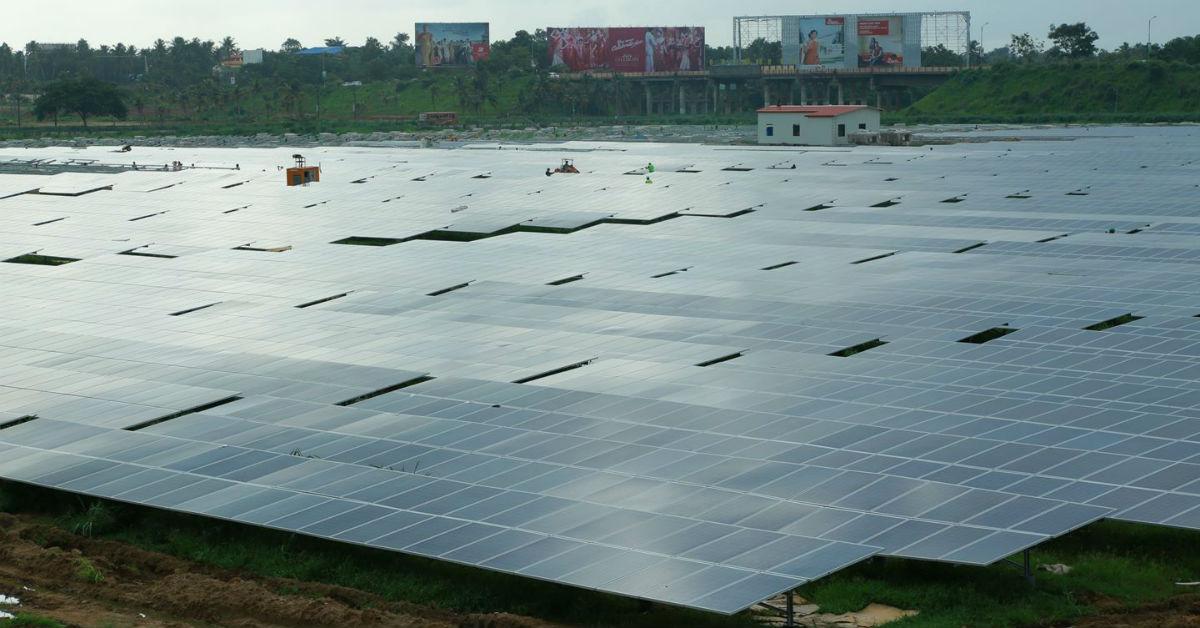Inside The World's First Solar-Powered Airport
The Cochin International Airport has become totally self-sufficient with the help of a 12-megawatt solar plant.
Updated Oct. 19 2018, 4:04 a.m. ET
More than 1,000 flights depart out of Cochin International Airport each week. The travel hub is the seventh busiest airport in India, handling more than 10 million passengers every year. Located in the southwestern coastal state of Kerala, it hosts 27 airlines and some three dozen shops and restaurants — and the whole thing runs on solar energy.
Cochin International became the world’s first solar-powered airport in 2015, when it transformed a patch of land previously reserved for cargo handling into a 12-megawatt solar plant. This new energy source provides all the power the airport needs, and even generates surplus for the state grid, according to the BBC.
Cochin International has earned lots of press and distinction for its major investment in renewable power. Most recently, the UN gave the travel center its highest environmental honor: a Champion of the Earth award, specifically in entrepreneurial vision. But the solar switch wasn’t just good for the planet — it was good for business, too.
“When we realised that our power bill is on the higher side, we contemplated possibilities,” VJ Kurian, managing director of the Cochin International Airport Limited, told Forbes India. “Then the idea of tapping the green power came in.
“We consume around 48,000 units (KWh) a day. So if we can produce the same, that too by adhering to the sustainable development model, we could send a message to the world.”
They started small, installing 400 solar panels on a rooftop as a test pilot in 2013. When that mini solar site performed, they dedicated 45 acres on the property to a new energy hub.
It would eventually contain more than 46,000 solar panels.
According to CNN, the project cost roughly 620 million rupees, or about $9.3 million. But the airport expects to make its money back within the next four years since it’s no longer paying for electricity. The emissions savings are equally enormous. The solar plant is expected to eliminate 300,000 metric tons of carbon, a sum that’s the equivalent of planting three million trees.
Now, Cochin International Airport is helping other travel centers do the same. Forbes India reports that it’s signed an agreement to lend technical assistance to three airports in Ghana which are planning to build solar plants of their own. Engineers from Liberia have also sought their expertise, while multiple airports in India are following Cochin International’s lead.
At the end of last year, Netaji Subhas Chandra Bose International Airport unveiled an even bigger 15 megawatt solar farm designed to reduce its carbon emissions and energy bills. The project is expected to save the Kolkata transit center, which is the fifth busiest airport in India, around 12 million rupees (roughly $16,337) per month.
As the UN notes, India is an ideal spot for a solar boom, since the country enjoys about 300 sunny days a year. Prime Minister Narendra Modi has already seized on this opportunity to address the lack of power in rural areas. Thanks to combined extension of the national grid and installation of solar panels, all inhabited Indian villages gained access to electricity this April.

